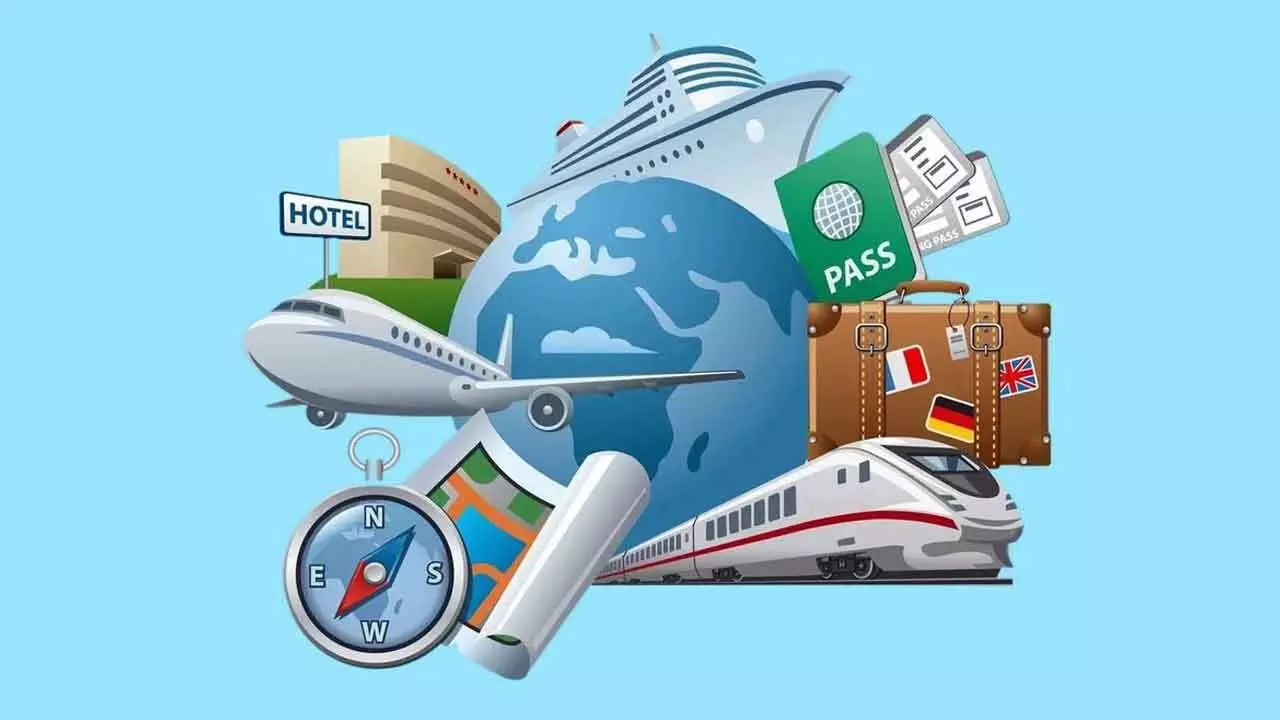Indian travel operators up to the challenge from digital aggregators
Making arrangements and reservation service market integral to the global travel and tourism industry
Indian travel operators up to the challenge from digital aggregators

In the domestic tourism market, growth is being fuelled by micro holidays (quick getaways or staycations over long weekends), growing spiritual tourism, and better infrastructure (improved last-mile connectivity) facilitating travel to newer destinations
In a world full of wanderlust and travel dreams, statistics paint a colorful picture of the travel industry's global footprint.
However, the meteoric rise of travel booking mobile apps, reaching revenue of $22 billion worldwide in the same year, shows that even in the digital age, travellers are not willing to compromise on efficiency and speed. It seems like the travel agent industry is not just navigating the world but also the evolving landscape of technology, proving that in the realm of exploration, there is always room for both the traditional and the cutting-edge.
The travel arrangement and reservation service market is an important part of the global travel and tourism industry. This service includes facilitating different aspects of travel planning, inclusive of booking of flights, accommodations, tours, transportation, and other related services. The market is greatly determined by factors like geopolitical events, technological advancements, disposable income, and others.
These developments empower businesses to offer better-tailored solutions and services, which, in turn, contribute to the growth of the travel arrangement and reservation services industry.
Indian domestic operators set for revenue growth:
CRISIL ratings has projected a 15-17 per cent increase in revenue for India's tour and travel operators this fiscal year, driven by rising domestic tourism and growing international travel.
Rising domestic tourism and increasing propensity to travel overseas will expand revenue of India’s tour and travel operators, it says. Improving infrastructure, rising disposable incomes, a behavioural shift in travel patterns, and the government’s increasing focus on boosting domestic tourism will further support the sector’s revenue growth.
To be sure, the growth in revenue will be on a high base of last fiscal, when revenue jumped ~40% on-year to about Rs. 14,500 crore, surpassing the pre-pandemic peak by ~20 per cent.
The credit profiles of travel operators, too, are expected to remain healthy, supported by strong balance sheets and steady operating margins of 6.5-7 per cent, in line with last fiscal, resulting in sizeable cash flows and continuing low reliance on debt.
An analysis of four major travel operators2, which account for ~60 per cent of the sector’s revenue, indicates as much.
Says Poonam Upadhyay, Director, CRISIL Ratings Ltd, “The trend of ‘revenge travel’ seen after the pandemic has evolved into ‘regularised travel’ in recent years with a significant shift towards shorter and frequent vacations, for both domestic and overseas trips. Moreover, growing middle-class aspirations, rising urbanisation, affordable packages, steadily increasing income levels, and the government’s focus on boosting Indian tourism will maintain the strong momentum in the tour and travel sector. This will, in turn, ensure healthy double-digit revenue growth for travel operators this fiscal as well.”
In the domestic tourism market, growth is being fuelled by micro holidays (quick getaways or staycations over long weekends), growing spiritual tourism, and better infrastructure (improved last-mile connectivity) facilitating travel to newer destinations.
An increase in inbound travel (foreign tourist arrivals) to pre-pandemic levels and high demand from the corporate and MICE segments are also supporting domestic travel.
For overseas leisure travel, growth is being led by higher disposable incomes, visa-free facilities from 37 countries, simplified visa processes like visa-on-arrival and e-visa facilities, and easing visa-related challenges related to long-haul destinations. In addition, attractive travel packages and increased focus of Indian airlines on new destinations in Southeast Asia and central Asia are spurring international trips, driving outbound travel to a record high this calendar year.
The increase in overseas travel is despite hike in the rate of tax collected at source (TCS) on overseas travel packages effective October 1, 2023. The tour and travel sector’s liquidity is expected to remain strong given the inherent negative working capital cycle on account of significant customer advances and lower dependence on debt.
That said, revision in visa guidelines, growth in commercial air fleet, sharp movement in air fares, change in tax structure, and inflation will bear watching.
Meanwhile, steady profitability and strong balance sheets will keep credit profiles healthy.
The travel industry is greatly influenced by geopolitical events like terrorism, conflicts, and political tensions. These uncertainties can lead to sudden changes to travel advisories, border closures, and visa policies, severely impacting travel plans. The concern of travellers for safety in uncertain regions may minimize the demand for travel arrangements and reservations in these areas, leading to market fluctuation.
Moreover, economic recessions and downturns can significantly affect travel. Minimized customer confidence and reduced corporate travel budgets can also impact travel arrangement services, thus impacting the overall market growth.

